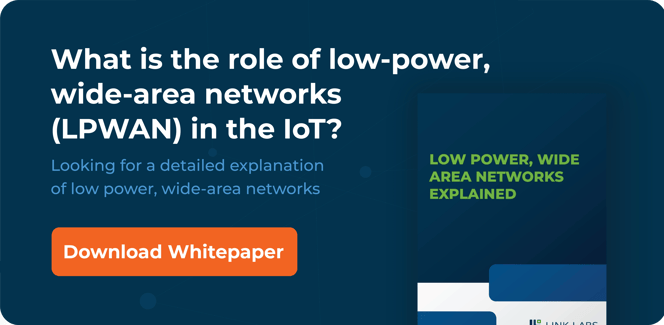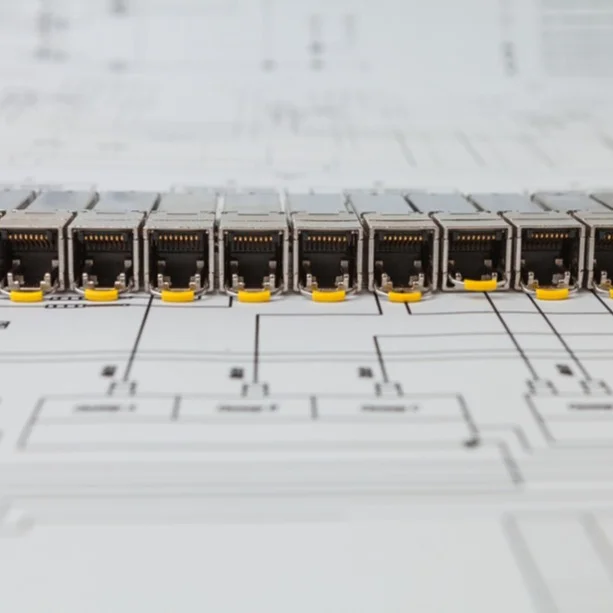When Sigfox began in 2009, it disrupted the Third Generation Partnership Project (3GPP)—the technical body that standardizes cellular communications—by saying that there was an underserved market for devices that:
- Don’t have a lot to say.
- Need to be very inexpensive.
- Require very small power budgets.
- Require very long range.
Sigfox was successful in spurring a Low Power Wide Area Network (LPWAN) arms race, and attracted a lot of early investment—but mobile operators with multibillion-dollar businesses aren’t too keen on startups eating into the market share. In 2014, Chinese cellular technology giant Huawei acquired U.K.-based Neul, an Internet of Things (IoT) company with some interesting intellectual property around long-range radio technology. Neul’s narrowband approach to cellular IoT was a precursor to Huawei, along with a number of cellular infrastructure vendors, chipset manufacturers, and mobile network operators (MNOs) adopting a standard called Narrowband IoT (NB-IoT), otherwise referred to as LTE Cat-NB1. Below, we’ll provide a broad overview of both NB-IoT and LTE Cat-M1 (an LTE-based alternative to NB-IoT often referred to as LTE-M), both of which are established technologies but still years away from true global coverage. We’ll also talk more about whether or not you should realistically consider NB-IoT as an option for your products and services.
Below, we’ll provide a broad overview of both NB-IoT and LTE Cat-M1 (an LTE-based alternative to NB-IoT often referred to as LTE-M), both of which are established technologies but still years away from true global coverage. We’ll also talk more about whether or not you should realistically consider NB-IoT as an option for your products and services.
Definitions, Differences, & Deployability
LTE-M is 3GPP’s response to the growing interest in the IoT and LPWANs. It is an attractive option for those looking to deploy on current cellular networks, but need an option that is more resource-efficient. There are two innovations that help LTE-M improve battery life: LTE eDRX (extended discontinuous reception) and LTE PSM (power saving mode).
LTE-M will serve applications that LTE has never been used for before—from water meters to agricultural monitors and beyond. The unique part of LTE-M is that it can be extremely power-efficient and move 10 bytes of data a day, but also have access to move a megabit per second. Therefore, LTE-M serves a very broad set of use cases.
Want to learn more about differences between LTE-M and NB-IoT? View this free webinar.
Narrowband IoT (NB-IoT, or LTE Cat-NB1) is another 3GPP proposal, but it does not operate in the LTE construct. It is based on a DSSS modulation similar to the old Neul version of Weightless-W in a 200 kHz channel. You can think of NB-IoT as the legacy cellular club’s answer to LoRaWAN and Sigfox; they use a more sophisticated physical layer technology and licensed spectrum, but the addressable use cases are pretty much the same.
The hype for NB-IoT is spectrum-driven. There are loads of 200-kHz GSM spectrum assets that aren’t being used, and proponents want to see NB-IoT deployed on it. NB-IoT is also an attractive option for nontraditional bands like guard bands and IoT-specific bands where regulators allow it.
Many big telecommunications giants—like Huawei, Ericsson, Qualcomm, and Vodafone—have been actively involved in putting this standard together. Politically, NB-IoT is also a way for players like Huawei and Ericsson—who haven’t been as prevalent in LTE intellectual property development—to have more skin in the LPWA game than they have previously.
NB-IoT is designed to exist in one of three ways:
- In independently licensed bands.
- In unused 200 kHz bands that have previously been used for GSM or CDMA.
- On LTE base stations that can allocate a resource block to NB-IoT operations or in their guard bands (where regulations allow it).
These conditions make a big difference in determining what cellular operators will deploy which technology.
- In the U.S., both Verizon and AT&T will likely use LTE-M, as both companies have poured billions into their LTE network. Therefore, they will likely have very little interest in something that isn’t LTE-based, though Verizon has announced support for NB-IoT as well. (The business case isn’t clear to us, however.)
- Areas around the world with larger GSM deployments and less LTE will likely have more reason to turn to NB-IoT. In the U.S., carriers like T-Mobile and Sprint may eventually look toward deploying NB-IoT on existing GSM spectrum.
In our view, NB-IoT doesn’t offer any real advantage over LTE-M, unless you don’t have LTE deployed and have no plans to deploy any new infrastructure until 5G is mature. The markets and use cases are primarily the same; LTE-M has some clear technological benefits, and some are speculating there isn’t much in the “low-value” IoT space that Sigfox hasn’t already capitalized on. Generally, NB-IoT fans point to battery life, but when you factor in the time on air differences (LTE-M messages are very short compared to NB-IoT sending messages more slowly) and full-blown PSM and eDRX, we’re not convinced.
LTE-M VS. NB-IOT
PROS
LTE-M
- Increased data rate
- Reduced complexity
NB-IOT
- Power efficiency
- Reduced costs
- Increased penetration
CONS
LTE-M
- Global deployability
- Licensing costs
- Power efficiency
NB-IoT
- Regional deployability
- Commitment costs
- Front-end complexity
- Deficient seamlessness
Pros of LTE-M and NB-IoT
LTE-M
- LTE-M has higher data rates than NB-IoT. This allows for LTE-M to have a richer solution set, as it will offer the broadest range of cellular capabilities. And while LTE-M allows you to go up to really high data rates, you can benefit from new architectures like eDRX and PSM, which can also help you benefit from the same power budget as NB-IoT or Sigfox.
- LTE-M will benefit from reduced complexity. For example, Verizon has a single spectrum across the U.S. for LTE-M, which has driven a lot of complexity out of LTE-M solutions for them. This allows a very simple frontend and antenna configuration.
NARROWBAND IOT
- NB-IoT consumes minimal power when it’s operating. Nearly all IoT technologies save power when they aren’t operating, as they all “sleep” about the same. But when the modem is running and handling all the signal processing, the technologies with simpler waveform—like NB-IoT—will consume less power. Note: Not all chipsets for NB-IoT will have the same power efficiency. For example, the Sequans monarch chip—which is dedicated to LTE-M and NB-IoT—doesn’t have to run Linux or do as much signal processing, making it far more power-efficient than refactored Cat-1 silicon from other vendors.
- NB-IoT-only components cost less. Chips that support NB-IoT exclusively (as opposed to those that also support LTE-M) are cheaper because they’re simpler to create. A 200 kHz NB-IoT frontend and digitizer is much simpler than a 1.4 MHz LTE resource block. Also, processing OFDM in LTE requires more power than a simpler waveform like NB-IoT. Because most chip manufacturers seem to be building silicon to support both, this may be a moot point.
- NB-IoT may be able to provide deeper building penetration than LTE-M. This is because the bitrates are less, thus, the link budgets are better. Process gain improvements at the network level for LTE-M may mitigate this advantage though. In reality, unless you’re the MNO deploying the network, all you care about is whether you have coverage or not.
Cons of LTE-M and NB-IoT
LTE-M
- There may be parts of the world where LTE-M is never deployed. Especially where MNOs are stretching the lives of their 3G networks until they can refarm spectrum and deploy 5G networks. Parts of Asia, Africa, and Eastern Europe fall into this category. 5G is still several years away from being deployed (despite the press releases and hype about successful tests), though deploying a 4G network that will be mildly obsolete (or at least dated) in five years is likely not a good financial decision. NB-IoT and LTE-M don't have a current sunset since they are connected to 4G and have a proposal to be wrapped up in the 5G. Typically no device will last to the 5G sunset, which makes both of these options viable.
- There will be legacy licensing costs involved. By using LTE, you’re likely to have to pay IP licensing to the InterDigitals and Qualcomms of the world for access to the underlying innovations like OFDM. Yay cellular.
- The question of power efficiency is up in the air with LTE-M. Because eDRX and PSM are only recently being deployed, their power efficiency is hypothetical. So while the power saving features look great, you won’t know if the networks will let them operate as designed or if carrier-specific features will eat into the power budget until you pilot real devices on real networks.
NARROWBAND IOT
We’ve heard from customers who are very interested in NB-IoT and what it could mean for their fledgling IoT projects. To that we say “great!”—but you have to look at the structure of your application, where you’re deploying, and what level of complexity you can support in your supply chain to know if it makes sense for your use case. NB-IoT on a per-device basis will likely be more popular than LTE-M globally, but there are some obstacles to consider:
- Deploying in the U.S. will be difficult. The world is currently being carved into two factions—one that’s deploying LTE-M first, and another that’s deploying NB-IoT first. Most places are not doing both at the same time. So if you’re in China, you’d naturally be in the NB-IoT camp; alternatively, it’s LTE-M in the U.S. Everywhere else is country-by-country. Countries with a vested interest in NB-IoT are those in which Huawei, one of the world’s largest telecommunications infrastructure providers, has an established presence. Huawei is the primary vendor of the underlying chips and base station.
However, U.S. companies are currently banned from buying Huawei equipment. And other network service providers, like Ericsson and Nokia, have a vested interest in supporting LTE-M first because they can upgrade the existing towers more inexpensively—only new base station software is required to deploy LTE-M. For countries that don’t have LTE coverage everywhere (which is a good-size chunk of the world), putting up new infrastructure that can support NB-IoT is less expensive than putting up LTE infrastructure.
So, if you’re hoping to utilize NB-IoT for your product, know that deployability could become problematic depending on where you hope to be geographically. Since NB-IoT isn’t truly a part of LTE, it either needs to operate in a side band using different software—which may be costly for carriers—or it needs to be deployed in deprecated GSM spectrum. Most carriers who support LTE won’t be willing to reduce the number of resource blocks allocated to LTE handsets because they’re big money makers. That leaves the issue of deployment—and all its complexities—as a big question mark for NB-IoT.
- You have to fully commit to NB-IoT. As it relates to both the chips and software, there’s no realistic way to take a middle-of-the-road approach. The chips that do support both LTE-M and NB-IoT are more expensive. And in most cases, you wouldn’t want to pay extra for a chip that does both if you have primarily one or the other.
Also, people like to say that they can use the same chip anywhere in the world, but NB-IoT is a very narrow band technology with a different software load than LTE-M. So even though the hardware itself can potentially be used in different frequency bands, that doesn’t really simplify things from an operations standpoint. From a manufacturing standpoint, it is only a slight simplification, because you can build the same device to work everywhere, but you still have the operational challenge of needing to load it with different firmware, and make sure the correct firmware loads make it into the correct devices.
- The front-end complexity of NB-IoT could actually be greater than LTE-M. Often, there’s not ubiquitous or country-wide 200-kHz spectrum from GSM available for NB-IoT to be dropped into—which means modem frontends and antennas could become more complex than intended. A lot of this can be done in software with innovative RF frontends from companies like Skyworks, but this is still one more manufacturing and operational challenge to overcome.
- NB-IoT firmware-over-the-air (FOTA) or large file transfer isn’t seamless. Some of the design specifications for NB-IoT make it such that sending larger amounts of data down to a device is hard. Therefore, FOTA could be really difficult, even though it is a requirement for most modern IoT applications. LoRaWAN and Sigfox have this same issue. Sure, you can stretch the limits of the protocol to get that binary payload down, but the system is not designed to support that very elegantly. With LTE-M, on the other hand, you can move 100 kbps using an IP protocol and update firmware in seconds.
- NB-IoT is best suited for primarily static assets, like meters and sensors in a fixed location, rather than roaming assets. Roaming has been promised for NB-IoT, but network and tower handoffs will be a problem. There are lots of places for 200 kHz bands to go, and having a device that is simple enough to be cheap and power-efficient yet sophisticated enough to figure out which band to operate in quickly may be hard to come by.
In Summary
If you need to go to market with your solution soon, first you need to figure out what networks are available locally and what hardware is available for those networks—not just pilots and prototypes (and especially not press releases), but real network coverage, and devices that you can buy without signing lots of NDAs. And hopefully, this overview of NB-IoT has been helpful in streamlining that process.
At Link Labs, our goal is to help you deploy your low-cost, battery-powered IoT product or service now, so let’s build an LTE-M product together.



